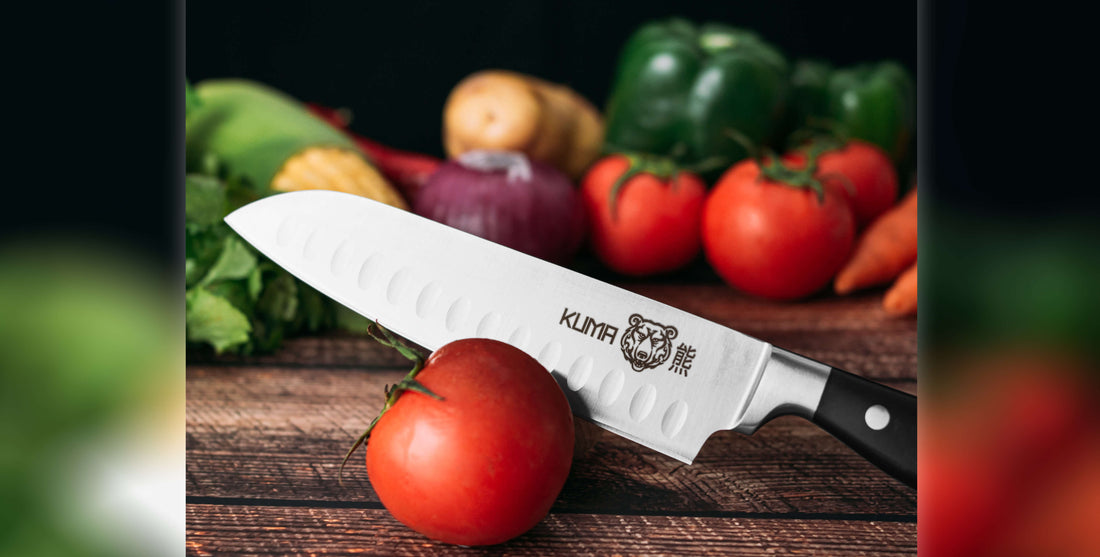A Comprehensive Guide for How to Use a Santoku Knife
The santoku knife is a versatile and essential tool in any kitchen, and with proper use, it can make quick work of a variety of ingredients. Its name, which means "three virtues" in Japanese, refers to its ability to easily handle tasks such as slicing, dicing, and mincing. In this comprehensive guide, we'll show you how to properly use a santoku knife to get the most out of this versatile kitchen tool.
First, let's start with some santoku knife basics.
A santoku knife typically has a shorter, wider blade than a chef's knife, making it easier to handle and control. It also has a shorter, more horizontal handle, which helps with precise cuts. When selecting a santoku knife, it's important to choose one that is made from high-quality materials such as stainless steel or high carbon steel. These materials will ensure that the blade stays sharp and durable over time.

How to dice an ingredient with a santoku
Start by slicing it into thin strips. Then, stack the strips on top of each other and slice through them again, this time at a 90 degree angle to the first cuts. This will create small, even cubes.
Tips for how to mince like a pro
Start by dicing your ingredient as described above. Then, use a back and forth motion to finely chop the diced pieces until they reach your desired consistency. Mincing is often used for herbs and other small ingredients, and a sharp santoku knife is essential for achieving a fine mince.
Additional santoku tips and suggestions
It's important to remember to always use a cutting board when using a santoku knife to protect both the knife and your countertops. A cutting board made from wood or plastic is best, as they are less likely to dull the blade than a glass or ceramic surface. Additionally, be sure to keep the blade sharp by using a honing rod regularly and sharpening it as needed. A sharp blade not only makes cutting easier, but it also ensures precise, clean cuts for a professional finish.
Conclusion
With these tips in mind, you'll be well on your way to using your santoku knife like a pro. Whether you're slicing, dicing, or mincing, this versatile tool will make quick work of any ingredient. From preparing vegetables for a stir-fry to finely chopping herbs for a marinade, the santoku knife is a kitchen essential that every home cook should master.

